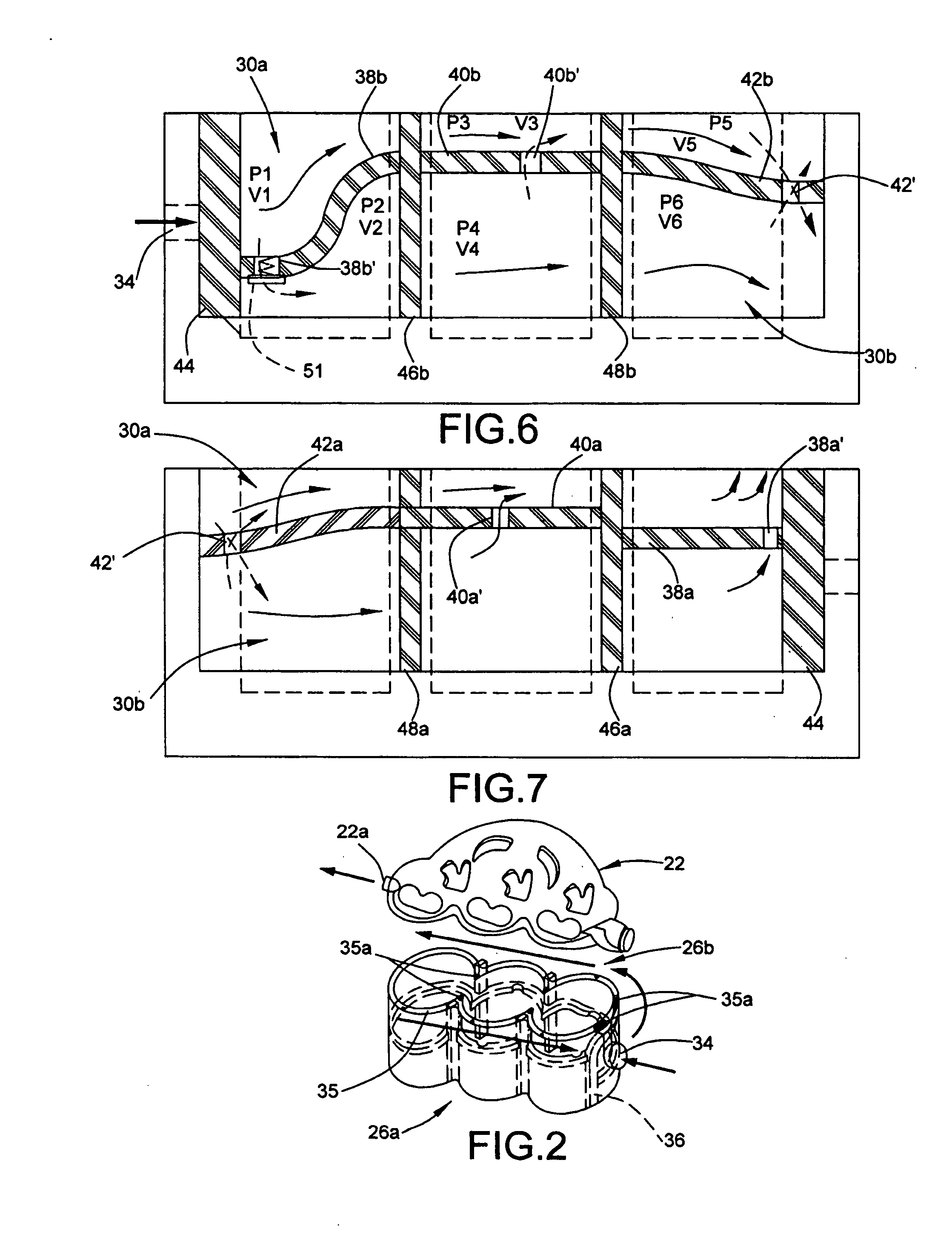Cylinder block cooling arrangement for multi-cylinder internal combustion engine
a multi-cylinder, internal combustion engine technology, applied in the direction of cylinders, machines/engines, mechanical equipment, etc., can solve the problems of thermal expansion differences, non-uniform temperature distribution on the combustion chamber surface, and maintenance of generally consistent cylinder temperatures, so as to facilitate filling and draining of water jackets and reduce air entrapment
- Summary
- Abstract
- Description
- Claims
- Application Information
AI Technical Summary
Benefits of technology
Problems solved by technology
Method used
Image
Examples
second embodiment
[0076] The insert 136 includes a first insert member 136a and a second insert member 136b. The first insert member 136a includes the first support member 44, the first arcuate members 38a, 38b, and the second and fourth support members 46b, 46a. Similarly, the second insert member 136b includes the third arcuate members 42a, 42b and the third and fifth support members 48b, 48a. The second arcuate members 40a, 40b are not provided by the insert 136. Accordingly, the insert 136 is installed in the water jacket 30 by inserting the first insert member 136a into the first end of the water jacket, and by inserting the second insert member 136b into the opposite or second end of the water jacket.
first embodiment
[0077] With reference to FIGS. 12-13, wherein flow through the water jacket 30 with the insert 136 is illustrated, it has been found that the insert 136 provides many of the same advantages as the present invention. For example, when engine speed is low, the coolant flows primarily in the upper portion 30a of the water jacket. Although there tends to be some mixing of coolant due to the lack of isolation between the upper and lower portions 30a, 30b of the water jacket at the middle portion of the engine block, the fluid tends to continue moving in the same direction as it flows across the second support member 46b toward the fourth support member 48b, so this mixing is somewhat minimized at low speeds. At higher engine speeds, in which the coolant is moving faster in the upper portion 30a of the water jacket, this mixing is more pronounced, but even in this case the coolant flow remains stratified to a certain extent, and mixing tends to be primarily due to the previously mentioned...
PUM
 Login to View More
Login to View More Abstract
Description
Claims
Application Information
 Login to View More
Login to View More - R&D
- Intellectual Property
- Life Sciences
- Materials
- Tech Scout
- Unparalleled Data Quality
- Higher Quality Content
- 60% Fewer Hallucinations
Browse by: Latest US Patents, China's latest patents, Technical Efficacy Thesaurus, Application Domain, Technology Topic, Popular Technical Reports.
© 2025 PatSnap. All rights reserved.Legal|Privacy policy|Modern Slavery Act Transparency Statement|Sitemap|About US| Contact US: help@patsnap.com



